|
On April 21st 2006 the
exclusive rights for the Touring
Superleggera brand were acquired by the international
Zeta Europe BV group, a company which already has several subsidiary
companies in the Milan area
such as Carrozzeria Granturismo
near Arese, and Ruote Borrani in Rozzano. The new targets for Carrozzeria
Touring are ambitious and well-aimed: a high-quality and
professional Milan based service centre for the special
product niche in the international car industry. Sectors:
automotive design,
models concept cars, and small-volume production of special
vehicles.
“I had the pleasure and privilege to meet Carlo Felice Bianchi Anderloni on several occasions,
and admired his
inspiring interest and open mind for even very modern design concepts.
He always liked to discuss the concept of a
‘modern day Touring’,” says Zeta Europe’s CEO Paul V J Koot.
“Touring Superleggera represents
a precious new venture, which we are very proud to add to
our corporate
portfolio.
But we thoroughly realize the significant tasks and
responsibilities that lay behind this takeover. Touring
has a long, rich and versatile heritage that requires very
well-thought and balanced steps to grow further in the
complex context of the automotive environment of the 21st century.
“We are building a compact, dynamic team of competent young
professionals. Our pilot projects will include partial style studies (known as the traditional Elaborazione), as well as spectacular, totally new
projects. We will focus on turn key projects. We want to see avant-garde design and
new Touring bodies, not only virtual or on shows but also on the road.
"And although today, we live in a global village, Touring Superleggera’s future models
will continue to share their most important DNA with their famous
ancestors: Italy, and design with original Italian inspiration. For me this is crucial, and we have a motivated and inspired
Italian partner in this venture to safeguard this fidelity to the roots of Touring Superleggera."
Carrozzeria Touring
Carrozzeria Touring was established in 1926 by Felice
Bianchi Anderloni who had worked for Isotta-Fraschini since
1904 as a test driver, then a brief period at Peugeot
Italiana. Anderloni and Gaetano Ponzoni acquired Carrozzeria
Falco in 1926, shortly thereafter, adopting the Touring
name. The two, both trained in law, had a long and mutually
satisfying relationship and Ponzoni, despite outside
interests, remained Touring’s managing director until the
company ceased operations 40 years later.
Anderloni came to Touring without specific knowledge of
coachbuilding, learning as he went along and developing over
time a unique style of design that blended his appreciation
for lightweight construction with his experience as a driver
to create a characteristic style. An early licensee of
Charles Weymann’s system for constructing lightweight
flexible automobile bodies covered with fabric, Touring’s
first professional designer was Giuseppe Seregni who
collaborated with Anderloni to create the 1927
Isotta-Fraschini 'Flying Star,' a landmark in the artful
combination of aerodynamics and beauty. They continued to
pursue the dual goal of lightweight construction and
efficient aerodynamics and in the 1920s and 1930s created a
succession of innovative and creative designs.
|
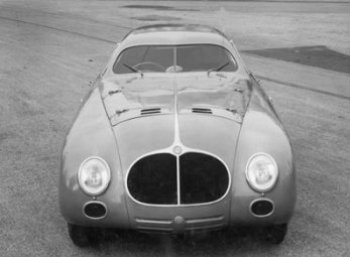
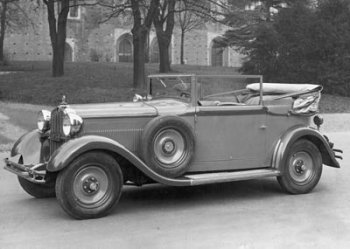 |
|
“I had the pleasure and privilege to meet Carlo Felice Bianchi Anderloni on several occasions,
and admired his inspiring interest and open mind for even very modern design concepts.
He always liked to discuss the concept of a ‘modern day Touring’ ” says Zeta Europe’s CEO Paul
V J Koot. |
|
|
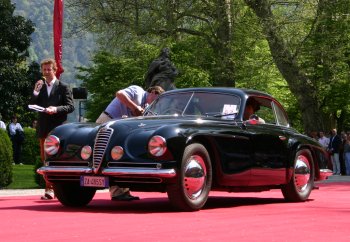 |
|
This Alfa Romeo 6C 2500
Super Sport bodied by Touring won the Villa d'Este
Concorso d'Eleganza in 1949. It soon became
immortalised when the 'Villa d'Este' designation was
added to its name. Carrozzeria Touring's important
contribution to automotive styling is honoured each
year by the Villa d'Este Concorso d'Eleganza judges
which award the Trofeo Carlo Felice Bianchi
Anderson, one of ten trophies handed out. It is seen
here parading past the jury during last month's
event. |
|
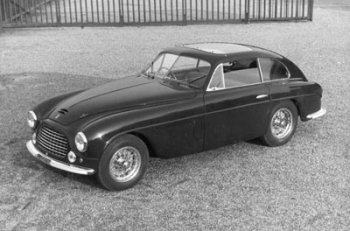
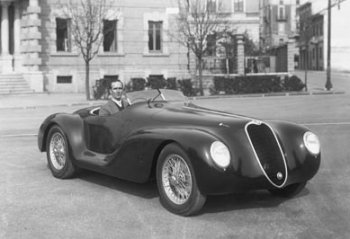 |
|
Carrozzeria Touring was established in 1926 by Felice
Bianchi Anderloni who had worked for Isotta-Fraschini since
1904 as a test driver, then a brief period at Peugeot
Italiana. Anderloni and Gaetano Ponzoni acquired Carrozzeria
Falco in 1926, shortly thereafter, adopting the Touring
name. |
|
|
Touring’s production capabilities in light alloy and
fabric-covered tubing structures brought the firm commercial
success in aircraft during the mid and late- 1930s, and this
experience led Anderloni to develop and patent the
'Superleggera' construction system. Touring’s 'Superleggera'
(super lightweight) system employed a structure of small
diameter tubes as the body’s armature. Extremely thin alloy
panels then covered the armature, taking their
strength from the tubing. 'Superleggera' had other
advantages aside from light weight, particularly its
flexibility in design.
Pre-war
'Superleggera' coachwork for Alfa Romeo, particularly on the
8C 2900 chassis, and the aerodynamic full envelope bodies
for BMW’s 328, laid the groundwork for Touring’s success
following World War II. Felice Anderloni’s death in 1948
during the company’s reconstruction, was untimely but not
before he and Federico Formenti had created the Alfa
Romeo Frecchia d’Oro and coupe and spider bodies for
Ferrari’s
166.
The postwar years were prolific for Touring and its
'Superleggera' construction system. Production work followed
and the firm grew rapidly under the leadership of
Anderloni’s son Carlo and the guidance of the ever-present
Ponzoni. The late 1950s were particularly productive as
Touring undertook series production of bodies for Alfa
Romeo’s 1900 Super Sprint and 2600, Aston Martin’s DB4,
Lancia Flaminia GT, Lamborghini 350 and 400 GT and the
Maserati 3500 GT. This rush of business, however, also sowed
the seeds of the company’s demise. The expansion undertaken
to meet demand was unsustainable when these projects ended
and new ones were not forthcoming to replace them. Touring,
which was known for and prided itself on the quality of its
workmanship, struggled to reconcile the conflicting needs of
volume production with its traditionally obsessive quality.
|
|
|
|
![]()
![]()